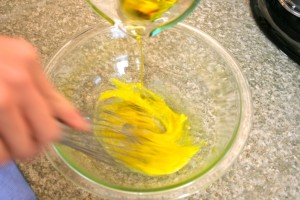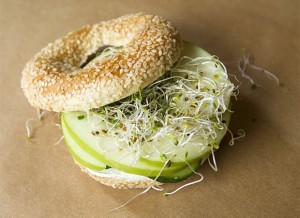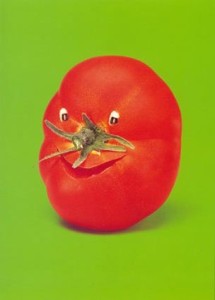New Zealand is an island, but to say they’ve never had a problem with Listeria in cold cuts is to ignore history.
 So much like Canada in 2008, and the U.S. in 1998. Listeria kills.
So much like Canada in 2008, and the U.S. in 1998. Listeria kills.
After two cold-cut related deaths in New Zealand in 2012, a health spokesthingy said they “routinely hands out brochures” and it no longer provides chilled pre- cooked meats to patients.
Do people really have to die before changes are implemented? Isn’t that why dieticians are in hospitals? Does anyone with a medical background know anything about Listeria?
It’s not like it’s something new.
Pay attention.
The widower of a woman who died in the Listeria outbreak at Hawke’s Bay Hospital in 2012 said the fines imposed on a meat company, its director and a staff member meant little.
In Napier District Court on Wednesday Bay Cuisine was fined $130,000, company director Garth Wise was fined $32,500 and production manager Christopher Mackie was fined $30,000.
The charges related to their supplying Listeria-contaminated meat to Hawke’s Bay Hospital and others, and for intentionally deceiving regulators by omitting test results that revealed the contamination.
Sound familiar?
The health board discovered cold ready-to-eat meats supplied by the company were contaminated in July 2012, after several Listeria cases had been linked to the hospital kitchen.
Patricia Hutchinson, 68, and an 81-year-old woman died after contracting listeria. Two other people were infected.
Robin Hutchinson, who held his wife of 46 years as she passed away, said “the fines imposed mean little to me”.
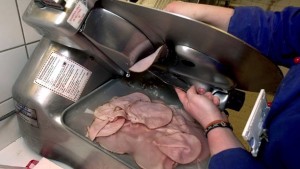 “Even now there has not been a single word or remorse. For those people to have contacted myself and the Napier victim’s husband would have cost a tax deductible phone call. My feelings are they must jointly have a conscience of steel,” he said.
“Even now there has not been a single word or remorse. For those people to have contacted myself and the Napier victim’s husband would have cost a tax deductible phone call. My feelings are they must jointly have a conscience of steel,” he said.
Hutchinson remained angry at the health board for providing cold meats to immuno-compromised patients such as his wife when Health Ministry advice was that such people should avoid it.
A DHB spokeswoman said the pre-packaged meats provided by Bay Cuisine had been tested and had shown negative results for listeria.
The Health and Disability Commisisoner had investigated the matter and found no fault by the DHB, she said.
DHB chief executive Kevin Snee said the company should have faced more serious charges.
The fines imposed on Wednesday brought some closure to the effects of the 2012 outbreak, but “the district health board remains of the view that it would have preferred to see the company facing more severe charges that reflect the seriousness of those acts, and the toll those actions have taken on people’s lives”.
Outside court an MPI spokesman said the charges laid against the company were the most severe available under the Animal Products Act, and anything more serious, such as manslaughter, would need to be laid by police.
Hawke’s Bay detective sergeant Mike Foster said the matter had been fully investigated by police and advice from the Crown had been that there was insufficient evidence to lay a criminal charge.
Judge Bridget Mackintosh said the decision to deceive had been intentional and the offenders must have known the risk their offending posed to those people at greatest risk of contracting listeria.
A subsequent editorial in the the Dominion Post says Bay Cuisine has got off far too lightly, and doesn’t the whole episode also reflects very badly on the regulator, the Ministry of Primary Industries?
This is a lamentable business and it raises the most serious questions.
The company stands condemned for intentionally deceiving MPI by not telling it about test results that showed its cold meats were contaminated by Listeria.
But MPI is also to blame in this matter, although they seem to have escaped any punishment.
When its tests found that meat from the company was contaminated, it did not inform the DHB because it didn’t know the meat was going to the hospital.
 The obvious question is: why didn’t it know? Why didn’t it ask the company where it was sending the meat?
The obvious question is: why didn’t it know? Why didn’t it ask the company where it was sending the meat?
Wasn’t that an obvious query for a public health regulator? Isn’t the public entitled to think that the regulator would show more curiosity about the possible destination consumers of infected meat?
Snee says the DHB would have liked to know the result of the MPI tests earlier, but he was “not interested in relitigating events” that occurred three years ago.
This is a most unfortunate remark.
Unless we learn from history we are doomed to repeat it. Do we know that MPI has learned from its slackness back in 2012?
One of the fortunate results of this whole sad case is that both the company and the regulator’s shortcomings have been exposed.
The company has been fined; the regulator will suffer a deserved dent in its reputation.
But Robin Hutchinson says neither he nor the husband of the other victim has heard “a single word of remorse” from the company.
If that is so it is a disgrace.
The New Zealand Meat Processors Association responded it is confident the industry is doing enough to stop Listeria-contaminated food from entering the market.
Environmental and Scientific Research was sent 62 unopened Bay Cuisine cold-meat packages and all were found to contain Listeria.
Company employees lied and told the district health board that a batch of corned silver side tested negative for listeria, although it had actually tested “presumptive positive”.
Meat Processors Association chair Nick Harris said this is a very rare case and he can’t believe a company would deceive customers.
“This is absolute top of mind of all manufacturers. Listeria is a very difficult organism and our industry works very, very hard to ensure that these types of situations don’t occur,” Harris reports.
“There’s probably 1000 tonnes of product produced each week in New Zealand and, as we mentioned, it’s the first case ever.”
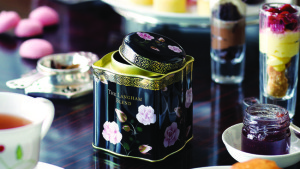 Health authorities investigating the outbreak have so far tracked down 66 people who attended the Langham’s luxury afternoon teas on July 11 and 12 and confirmed 34 cases of Salmonella, although the numbers may rise.
Health authorities investigating the outbreak have so far tracked down 66 people who attended the Langham’s luxury afternoon teas on July 11 and 12 and confirmed 34 cases of Salmonella, although the numbers may rise.
